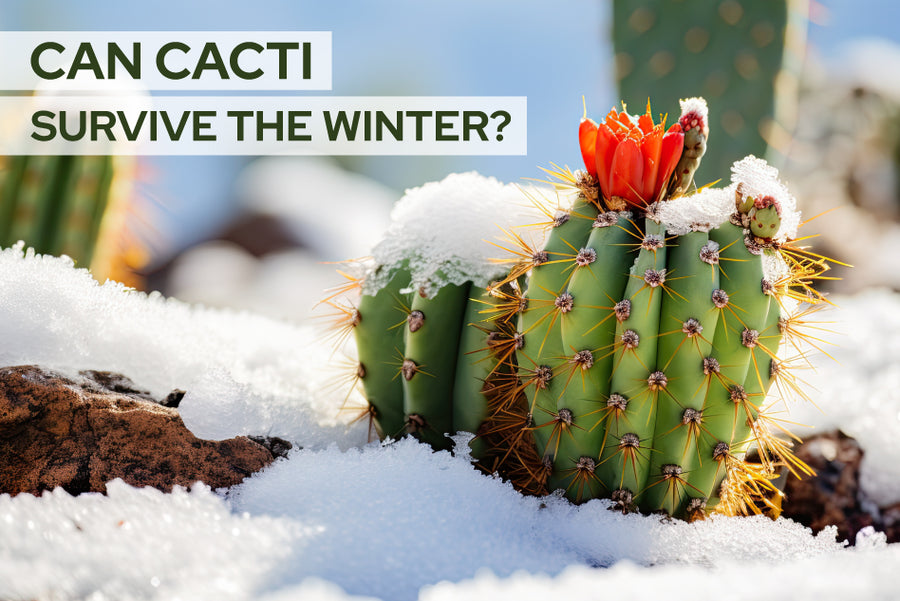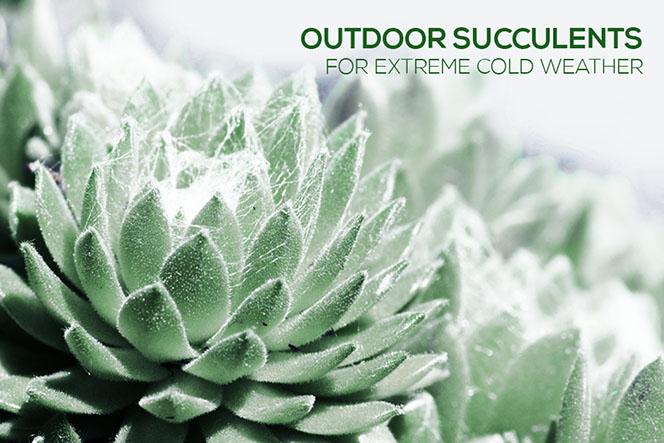Winter is approaching, and you might be wondering if your beloved succulents can survive a freeze. You’ve invested time and care into your plants, and the thought of losing them to frost is unsettling.
But what if you could ensure their survival with just a few simple steps? Imagine the relief of knowing your succulents are safe, thriving even when temperatures drop. This article will reveal the secrets to protecting your plants from the cold, equipping you with the knowledge to face winter with confidence.
Stay with us, and discover how to keep your succulents alive and well through the harshest of freezes.

Credit: www.reddit.com
Understanding Succulent Types
Understanding succulent types is crucial when you’re worried about their survival in a freeze. Not all succulents react the same way to cold weather. Knowing which ones are hardy and which are tender can save you a lot of heartache—and maybe even your plants!
Hardy Vs. Tender Varieties
Some succulents laugh in the face of freezing temperatures. These are known as hardy varieties. They can withstand frost and even a light blanket of snow. Think of sedums and certain sempervivums. They’re like the tough friends that don’t mind a chilly breeze.
On the flip side, tender varieties are the ones you need to protect. These succulents, like echeverias, are sensitive to cold and can suffer if exposed to freezing temperatures. A personal experience: I once lost a beautiful echeveria because I underestimated the night’s cold snap. Protecting tender varieties with covers or moving them indoors is a wise move.
Climate Adaptations
Succulents have evolved to thrive in specific climates, but can they adapt? Many have developed thick leaves to store water, allowing them to survive in arid conditions. But what happens when the climate shifts to icy?
Some succulents, surprisingly, adapt quite well to short periods of cold. They go dormant, conserving energy until warmth returns. Yet, prolonged freezing can be their kryptonite. Have you ever wondered how these resilient plants manage their survival strategies?
As you consider your succulent collection, it’s essential to think about how each type adapts to climate changes. Understanding this can mean the difference between a thriving garden and a sad, wilted collection. Are you ready to identify the hardy heroes and tender treasures in your own garden?

Credit: succulentsbox.com
Impact Of Freezing Temperatures
Succulents can struggle to survive freezing temperatures. Their water-filled leaves may freeze, causing cell damage. Covering them or bringing them indoors offers protection from the cold.
Impact of Freezing Temperatures Understanding how succulents react to freezing temperatures is crucial for their survival during cold months. If you’ve ever worried about your beloved green companions facing a cold snap, you’re not alone. The effects of freezing temperatures can be severe, and knowing what to expect can help you take action to protect your plants.
Cellular Damage
When temperatures drop, the water inside succulent cells can freeze, causing the cells to expand and burst. This cellular damage often leads to the death of the plant tissue. Imagine the heartbreak of seeing your once-vibrant succulents turn into mush. It’s essential to know that not all succulents have the same tolerance to cold. Some, like the Sempervivum, are naturally more resistant to freezing. However, others, such as the Echeveria, are far more susceptible to damage.
Signs Of Cold Stress
Have you noticed your succulents looking sad after a cold night? Cold stress is evident when leaves become translucent, soft, or even blackened. This change is a clear indicator that your plant is suffering. Another sign is leaf drop. If your succulent suddenly loses its leaves, it may be a cry for help against the cold. To prevent further damage, consider moving your plants indoors or using frost cloths to shield them. Are your succulents showing any of these signs? Taking swift action can make all the difference in their recovery. Stay vigilant, and your plants will thank you with their lush beauty once warmth returns.
Preventive Measures
Succulents need protection during freezing temperatures. Cover them with blankets or move them indoors to prevent damage. Ensure soil is dry, as wet soil can increase risk of frostbite.
When the chilly winds start to blow, succulent enthusiasts might feel a pang of anxiety. Can these hardy plants withstand a freeze? Taking preventive measures can make a world of difference. By understanding how to protect your succulents, you can ensure they thrive even when temperatures drop. Let’s delve into some practical tips that can keep your succulents safe during a cold spell.
Insulating Techniques
Insulation is your first line of defense against freezing temperatures. Consider using frost cloths or old blankets to cover your succulents during cold nights. These materials trap heat, keeping your plants warm. You might have heard of using Christmas lights for more than just holiday decor. Wrapping them around your succulents can add warmth and a festive glow. Just be sure they are non-LED, as LED lights don’t produce enough heat. Mulching is another effective technique. Adding a layer of mulch around the base of your succulents can insulate the soil. This helps retain heat and moisture, protecting the roots from freezing. Have you tried using straw or bark chips for this purpose?
Choosing The Right Location
The location of your succulents can significantly impact their ability to survive a freeze. Placing them near a south-facing wall can offer extra warmth, as walls absorb heat during the day and release it at night. It’s like giving your plants a cozy blanket. If your succulents are in pots, consider moving them indoors or to a sheltered area. Have you thought about using your garage or a sunroom as a temporary refuge? This simple act can shield them from frost damage. Wind can exacerbate the effects of cold weather, so seek out spots that offer wind protection. A fence or a larger plant can act as a barrier. By strategically placing your succulents, you minimize their exposure to harsh conditions. Are there other creative ways you’ve found to protect your succulents from freezing? Share your experiences and keep your green friends safe and thriving.

Credit: succulentsbox.com
Rescue And Recovery Steps
Succulents can survive a freeze with quick actions. Move them indoors or cover them to protect from cold. If frozen, let them thaw naturally and remove damaged parts to promote recovery.
Succulents face a tough challenge during freezing temperatures. Many people worry about their beloved plants. Understanding the rescue and recovery steps can save them. These steps help revive succulents after frost damage. With care, succulents can bounce back. Let’s dive into the detailed process.
Handling Frostbitten Plants
Begin by inspecting your succulents. Look for signs of frostbite. Soft, mushy leaves indicate damage. Remove these damaged parts gently. Prune them with sterilized scissors. This prevents infection and helps recovery. Protect the healthy parts from further cold exposure. Bring the plants indoors or use covers. Ensure they receive indirect sunlight. Avoid direct heat sources, which can stress them.
Promoting Healing
Focus on promoting healing. Reduce watering to prevent root rot. Succulents need less water during recovery. Check the soil moisture regularly. Keep them in a warm, dry environment. Use a gentle fertilizer to boost growth. Choose one designed for succulents. Apply it sparingly to avoid overfeeding. Monitor your plants closely. Look for signs of improvement. New growth indicates successful recovery. Be patient; healing takes time.
Long-term Care Strategies
Succulents are known for their resilience, but freezing temperatures pose challenges. Long-term care strategies are essential to help succulents thrive year-round. Understanding how to adjust care during different seasons and regularly monitor their health ensures they remain vibrant and healthy.
Seasonal Adjustments
Winter brings risks for succulents. Reduce watering to prevent root rot. Move plants indoors or to sheltered areas. Using frost cloths can add extra protection. In spring, gradually increase water as temperatures rise. Ensure proper sunlight for optimal growth. Summer demands more frequent watering and shade during peak sunlight.
Monitoring Health
Regularly check for signs of stress in succulents. Look for discoloration or mushy leaves. Inspect roots for rot. Healthy roots are firm and white. Prune damaged parts to encourage new growth. Maintain proper airflow around plants. This prevents mold and pests. Use well-draining soil to support root health.
Selecting Freeze-resistant Succulents
Succulents bring life to any space with their unique charm. But freezing temperatures pose a threat to these plants. Selecting the right succulents can help them survive the cold. Some varieties withstand freezing temperatures better than others.
Understanding which types are freeze-resistant can save your garden. Choose wisely, and your succulents will thrive even in winter.
Popular Hardy Species
Some succulents are naturally hardy. Sempervivum, often called Hen and Chicks, is a popular choice. It survives harsh winters with ease. Sedum is another robust succulent. It adapts well to cold climates. Agave parryi, known as Artichoke Agave, also tolerates freezing temperatures.
These species are great for cold regions. They offer beauty and resilience, even in tough weather.
Traits Of Cold-resistant Varieties
Cold-resistant succulents share certain traits. They have thick leaves. These leaves store water and protect the plant from frost. Rosette-shaped growth helps them shed snow. This prevents damage from weight and moisture.
Smaller size is another trait. Compact plants conserve energy and survive better in cold. Selecting succulents with these traits ensures they thrive during a freeze.
Frequently Asked Questions
Will Succulents Come Back After A Freeze?
Succulents may survive a light freeze if they are hardy. Severe freezes can damage or kill them. Protecting succulents with coverings or moving them indoors increases their survival chances. Damaged succulents might recover if roots remain healthy, but full recovery isn’t guaranteed.
Always check the plant’s hardiness zone for best results.
What Temperature Is Too Cold For Succulents?
Succulents generally thrive in temperatures above 40°F (4°C). Temperatures below this can harm them. Protect succulents from frost and freezing conditions to ensure their survival. Consider bringing them indoors or using frost cloth for outdoor protection in cold climates.
Do Succulents Need To Be Covered During A Freeze?
Yes, cover succulents during a freeze to protect them from frost damage. Use frost cloths or blankets. Ensure coverage extends to the ground, trapping heat. Remove covers during the day to allow sunlight exposure and prevent moisture buildup. Adequate protection helps maintain plant health and vitality.
What Does Cold Damage Look Like On Succulents?
Cold damage on succulents appears as blackened, mushy leaves and stems. Leaves may become translucent and drop off. Frost can cause brown edges on leaves. Succulents turn limp and lose their vibrant color when affected. Immediate care can help prevent further damage.
Keep succulents warm to avoid cold injury.
Conclusion
Succulents can survive a freeze with proper care. Protect them from cold. Use covers or bring them indoors. Choose cold-hardy varieties for better survival chances. Watch the weather forecast closely. Stay prepared for sudden temperature drops. Ensure soil drains well to prevent root rot.
Water sparingly during cold spells. Too much water can harm them. Mulch can help insulate roots. Keep succulents healthy for better resilience. Succulents add beauty to any space. Their survival needs a bit of attention. With care, they can thrive through winter.
Enjoy your succulents year-round.

